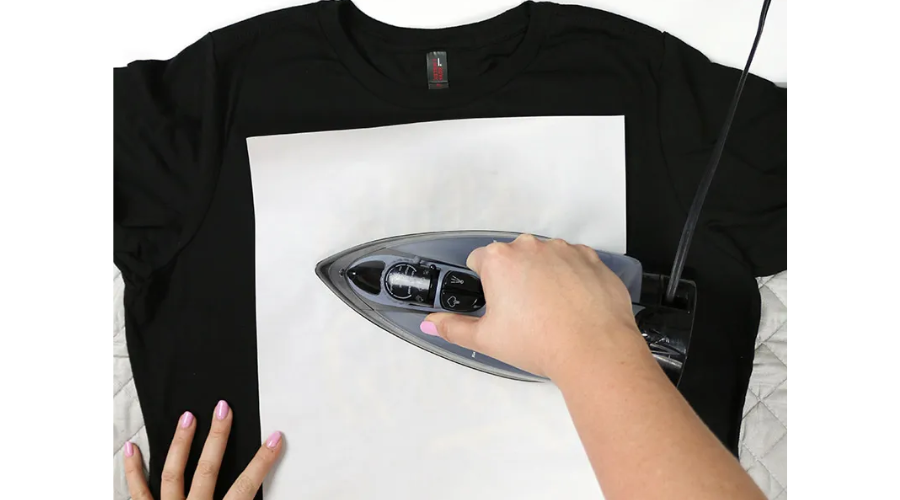
How to Apply Iron-on Vinyl and Self-Adhesive Vinyl to Anything
Whether you’re a professional who needs to look the part for client meetings or an everyday person who just likes to look better in their clothes, iron-on and self-adhesive vinyl are great ways to make that happen. Vinyl is versatile and can be used on many different kinds of fabrics. Whether you need to dress up your favorite T-shirt or need something more permanent, it’s easy to find a solution with these helpful tips. Keep reading to learn how you can easily apply iron-on and self-adhesive vinyl.
What is Vinyl?
Vinyl is a synthetic material that is similar to rubber in properties. It is flexible and can be formed into just about anything. While it is not a fabric by definition, it’s often used in clothing because of its durability, ease of care, and ability to keep color. Vinyl is available as a fabric, a trim, or a transfer paper. It can be used on a variety of fabrics from clothing and home decor to furniture and automotive items. The type of vinyl you choose depends on the type of surface you’ll be applying it to and the amount of durability you need.
What is Iron-on Vinyl?
Iron-on vinyl is a fabric-backed vinyl that can be applied to most fabric types, like cotton or polyester. To apply iron-on vinyl, you’ll need a specially designed iron with an iron-on backing sheet and transfer paper. You’ll also want a heat-resistant mat and a pressing board or a table that can hold a full ironing board. First, iron the transfer paper onto the right side of the fabric. The transfer paper is a specially formulated paper that allows the iron to transfer the design onto the fabric while removing any excess paper. Next, iron the iron-on vinyl onto the transfer paper-coated fabric. When the vinyl is completely dry, you’re ready to use the vinyl.
What is Self-Adhesive Vinyl?
Self-adhesive vinyl is a vinyl that uses an adhesive to stick to a variety of different materials, like paper, fabric, wood, plastic, and ceramic. To apply self-adhesive vinyl, you’ll need a vinyl pen, an iron-on transfer paper, and the material you’ll be applying the vinyl to. First, iron the transfer paper onto your material. Next, use the vinyl pen to draw the design onto the transfer paper. Remove the paper, and iron the vinyl onto the fabric using a normal iron. When the vinyl is completely dry, you’re ready to use the vinyl.
How to Apply Iron-on Vinyl?
There are a few different things you can do with iron-on vinyl. Iron the vinyl onto fabrics like T-shirts, scarves, and hats, or iron onto paper, fabric, wood, and other porous surfaces to create decorations and wall hangings. To iron vinyl onto fabric, you can use an iron set to its highest heat or a steamer to reduce ironing effort. Don’t use a dry iron as that can ruin the vinyl, and instead use a steam iron to reduce wrinkles.
How to Apply Self-Adhesive Vinyl?
When you’re applying self-adhesive vinyl, you’ll need a vinyl pen, a cutting mat, and the vinyl you’ll be applying. Self-adhesive vinyl works best when applied to smooth surfaces like paper, fabric, wood, and plastic. To apply self-adhesive vinyl, start by cutting the vinyl sheet with your vinyl cutter. Next, apply the vinyl to your surface. While the vinyl sheet is sticky on one side, the other side is textured to help create tension on the vinyl. After the vinyl sheet is completely attached to your surface, you’re ready to use the vinyl.
Adhere to Avoid Repositioning Fear:
Iron-on or self-adhesive vinyl is a great choice for creating clothing, decorations, and wall hangings, but it’s also great for creating signs, posters, and even furniture. However, there are some precautions you should take to avoid wrinkles or the vinyl lifting during application. The first thing to keep in mind is that you don’t want to apply the vinyl directly onto fabric, like a T-shirt. Instead, use paper, fabric, or a porous surface as a base. This will save the fabric from damage. Next, make sure the vinyl is completely dry before moving it. To check for dryness, press your hand against the vinyl and make sure it doesn’t feel damp. If it does, wait for it to dry. When you’re ready to reposition the vinyl, use the same process you applied it with. If the vinyl lifts at all, apply a second coat and wait for that to dry before repositioning it.
Final Words:
Vinyl is a great fabric option for creating clothing, decorations, and signs, but it’s also great for creating furniture and other items that need to be durable and waterproof. If you want to dress up your home, create decorations, create signs, or create durable furniture, there’s no better option than vinyl. Vinyl is available in a huge range of colors and patterns. It doesn’t need any maintenance, so it’s available for any purpose. Finally, you can also create custom vinyl designs that are perfect for any occasion.


